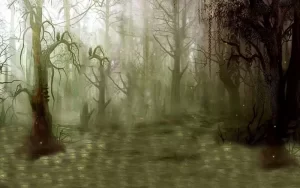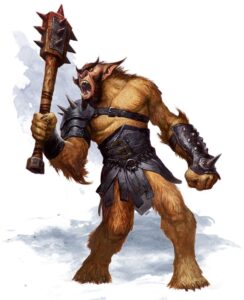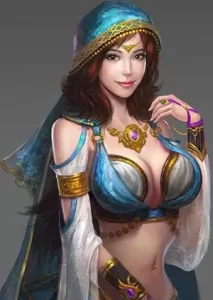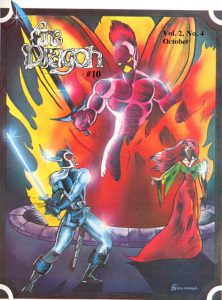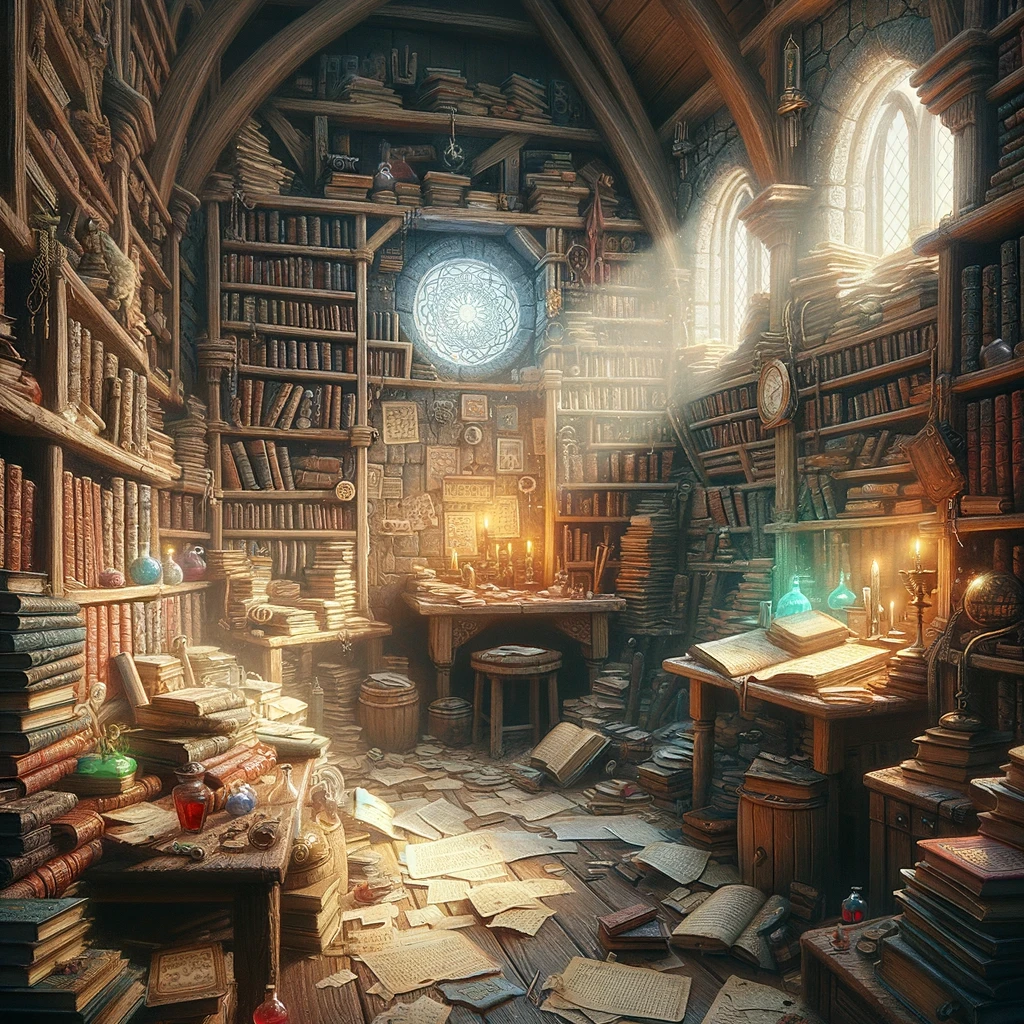
Guidelines for converting characters and adventures from earlier editions (i.e. AD&D, 2nd, 3e, etc.) of Dungeons & Dragons to the 5e. Conversion of D&D material is more art than science. The aim of conversion is to arrive at something that feels like the older-edition version, rather than at an exact replication. The guidelines in this document are intended to help you create what you want, not to force your choices along particular lines.
When converting player character, work with your DM to determine the best fit for your conversion. Your DM is the final arbiter of any conversion.
Level
Your DM sets the starting level of a converted character. For fourth edition characters, fifth edition level is two-thirds of fourth edition level, rounded normally instead of always down. For example, 25th level in fourth edition becomes 17th level in fifth edition. Level in other editions converts directly into fifth edition, but only up to 20th level.
Race
Choose the race that most closely matches your character's race. For instance, a wild elf in Faerûn is closest to the wood elf in the Player's Handbook. Replace all racial traits with those from the fifth edition Player's Handbook. Ignore traits that have no bearing on fifth edition characters, such as third edition's favored class trait or other editions' class limitations.
Racial proficiencies of like kind-skill, tool, or weapon- can be swapped for their equivalents in fifth edition. You might swap skill proficiency for tool proficiency when the tool is a better representation of a skill from a previous edition.
As an example, a wild elf character should have proficiency with spears, according to the third edition book Races of Faerûn. Your character could give up longsword and shortsword proficiency from the Elf Weapon Training trait to have spear and javelin proficiency instead. Similarly, if your elf character from third edition relied on rapier proficiency garnered from race, you might swap longsword proficiency from Elf Weapon Training for rapier proficiency.
For the DM: Race Conversion
For races not represented in the Player's Handbook, see the "Creating a Race" section. Start with the racial traits from one or more previous editions. From them, reconstruct the race in fifth edition terms, using existing races and their traits as models. The following general guidelines should help.
Consistency. Keep only those racial traits that are consistent from edition to edition. Especially ignore a trait that appears in only one previous edition.
Ability Scores. Bonuses to ability scores from race and subrace should add up to no more than +3, unless the race has few other beneficial traits. In most cases, no one score should receive a bonus higher than +2.
Three previous editions of the game included negative racial adjustments to ability scores, and two included racial ability score maximums and minimums. Fifth edition avoids such parameters, but in the case of monstrous races, such as kobolds, penalties can be appropriate.
Damage Resistances. In fifth edition, the damage resistance trait has no numeric value. A creature either has resistance to a damage type, or it does not.
Infravision. Racial infravision converts directly to fifth edition's darkvision. Use the race's infravision range for its darkvision, or a range chosen by your DM.
Low-Light Vision. Most races that have low-light vision in third or fourth edition should have darkvision. The range defaults to 60 feet.
Powers. Racial powers can be ignored or converted to the capability of casting a spell similar to the power. A character of the race should have to be of a level high enough to cast the spell as if the character were a spellcaster. For example, a spellcaster should be 5th level to cast a 3rd-level spell. A race that can cast innate spells must have a default spellcasting ability score chosen from among Intelligence, Wisdom, and Charisma.
Small Modifiers. Other editions' Small races often have traits that offer modifiers to Armor Class, attack rolls, saving throws (or defenses), and skills. Ignore a bonus, unless it is +4 or higher and not to Armor Class. If it is at least that high, proficiency or advantage might be called for as a racial trait. Similarly, ignore a penalty that isn't as severe as -4. Such a penalty might call for disadvantage in the applicable situation.
Class
Choose the fifth edition class that most closely matches your character's class (or classes, if your character has more than one). Alternatively, choose the class that most closely matches how you'd like your character to be in the game's narrative.
Don't feel constrained by your character's original class or classes. For example, you might decide that warlock or sorcerer is a better fit for your magic-user's story than wizard. Similarly, you are free to decide that fifth edition's paladin class or a cleric of the War domain better expresses your fighter/cleric than multiclassing does.
Class names can frame your thinking (the wizard was called a magic-user in first edition and a mage in second edition, and the rogue was called a thief in first and second edition). But try to think outside that box. For instance, your fourth edition avenger might be a fifth edition paladin with the Oath of Vengeance or a monk who follows the Way of Shadow. Your fourth edition warden could be a fifth edition cleric of the Nature domain, ranger of the Hunter archetype, or paladin who has taken the Oath of the Ancients.
Multiclassing can be the answer to fulfilling many character concepts. Before multiclassing in fifth edition, however, make sure no single class's development path fits the character's intent better. For instance, the Eldritch Knight fighter archetype might be a good fit for a former fighter/ wizard (or magic-user, or even an elf from Basic D&D). Likewise, a bard or a rogue with the Arcane Trickster archetype might be a fine fit for a wizard/rogue (or thief). The aforementioned avenger could be a cleric/monk.
For the DM: Class Conversions
If you'd like to recreate a class from a previous edition, see the "Modifying a Class" section in chapter 9 of the Dungeon Master's Guide. Start with the class write-up from one or more previous editions, and compare it to existing fifth edition classes. From that starting point, determine if you can use an existing fifth edition class as a template, modifying it to fit your needs. Try to focus on what made the class thematic across editions, as well as what you know the player would like to play.
Ability Scores
For most editions, a character's ability scores, unmodified by magic, can convert directly to fifth edition values. In all cases, the upper score limit of 20 still applies. A few extra guidelines follow.
Exceptional Strength. First and second edition allowed some characters to have exceptional Strength, expressed as a percentile value following a score of 18. Exceptional Strength has no conversion value, so the character's Strength score becomes 18.
Scores Higher than 20. Especially in fourth edition, scores higher than 20 can occur. Such scores should be treated as 20s, or the alternative for reassigning ability scores described next should be used.
Reassigning Ability Scores. Rather than converting scores, especially if you have trouble doing so, you can follow the rules for determining ability scores set forth in the fifth edition Player's Handbook. To do so, use the standard set of scores or customized scores acquired by spending points. Then apply racial adjustments and any adjustments from the Ability Score Improvement class feature. Use the original character's ability scores to guide your choices.
Proficiencies
In fifth edition, a character's proficiency options usually come from race, class, and background. Weapon proficiencies can be changed only with DM permission.
Based on your character's history, you should choose a background for your character during conversion. Alternatively, the DM can help you create an appropriate background. Then pick proficiencies that reflect what the character was good at in the previous edition. Here are a few other guidelines for certain editions.
Second Edition. You can base background choice on the character's secondary skills or best nonweapon proficiencies, if any. If your character had a kit, it could be the basis of your background.
Third Edition. Your character's best skills can guide your background choice. If your campaign setting provided regional or background benefits, you can use those as inspiration too.
Fourth Edition. The third edition method is possible, or you can use the character's background or theme as a guide.
For the DM: Background Conversions
Most of the previous editions provided bases for backgrounds. Second edition rules have secondary skills, nonweapon proficiencies, and character kits. In the span of the third edition rules are backgrounds, regional benefits, and even prestige classes. Fourth edition content also has backgrounds, regional benefits, and character themes.
In all these editions, a character's preferred skills can also indicate a background. In almost all cases, an existing background can be molded to fit your character. However, if you feel a character needs a new background, first read "Creating a Background" in chapter 9 of the Dungeon Master's Guide. Based on the game element used as a model for the background, look to see if an existing background could fit with modifications. If not, use the previous game's element to create a new background. You can use the character's personality as played in previous game sessions to help define personality traits, an ideal, a bond, and a flaw.
Feats
In the conversion process, feats from third and fourth edition should usually be ignored, because feats in fifth edition have a very different place in the game than the feats did in those two editions.
Feats in fifth edition can make a character concept come to life outside the race and class structures. Give the fifth edition feats a look if you feel your character lacks a needed aspect after you convert race and class.
Spells
Pick spells known as if creating a new character of the appropriate level. You can base the choice of spells known on those from previous editions. Similarly, you can base your choice of cantrips on at-will powers the character knows in fourth edition. The DM is the arbiter of whether and how a spell that doesn't exist in fifth edition can be converted.
For the DM: Spell Conversions
When converting a spell from an earlier edition, your first task is to make sure the intended effect doesn't already exist in a spell in fifth edition. Even if the effect doesn't exist, a similar one might. If you find a similar effect, you can use that spell instead. Or you can base the new spell on the existing one, making the job easier.
When you create a spell, use the "Creating a Spell" section in chapter 9 of the Dungeon Master's Guide. The earlier edition's spell is your basis for redesign. For complex spells, such as earthquake, give yourself leeway to determine effects based on the context in which the spells are cast. Doing so gives you the opportunity to surprise even the spell's caster when the spell is used.
Details
Your character's other details stay mostly the same, with the following possible exceptions. Alignment. In most cases, alignments directly correspond between editions.
Fourth edition and Basic alignments don't always correspond, so use the following guidelines: In Basic D&D, you choose lawful, chaotic, or neutral. Lawful corresponds to good-you choose whether it's lawful good, neutral good, or chaotic good.
Chaotic similarly matches a form of evil, whether lawful, neutral, or chaotic. For a neutral character, choose lawful neutral, neutral, or chaotic neutral.
For fourth edition, a good character should be your choice of neutral good or chaotic good. An evil character should be your choice of lawful evil or neutral evil. An unaligned character is your choice of lawful neutral, neutral, or chaotic neutral.
Languages. You should select languages from the fifth edition Player's Handbook, or from a list the DM provides, that most closely match the ones the character understood in the character's original edition.
Personality. Based on those in your chosen background, create a trait, ideal, bond, and flaw for your character. Alternatively, choose from those detailed in your new background.
Equipment
Equipment should be swapped for fifth edition equivalents. The DM handles the conversion and distribution of gear that isn't in the Player's Handbook.
For the DM: Equipment Conversions
As DM, you can allow characters to retain any gear and loot with which you are comfortable. Swap magic items for fifth edition equivalents. The rules in the "Starting at Higher Level" section of chapter 1 in the Dungeon Master's Guide are a fine way to establish a character's starting wealth and gear in a fifth edition campaign. In most cases, the high magic option is the best choice for representing treasure distribution of previous editions.
For mundane equipment, most such gear converts easily, since it has pragmatic (and narrative) effects rather than broad mechanical ones. Use existing equipment as guides, and when necessary, create mechanics appropriate to fifth edition. Remember to use advantage instead of flat bonuses. Also, try to limit mechanical effects to at or below those of common magic items.
Also read, Convert Old Dungeons and Dragons Adventures



